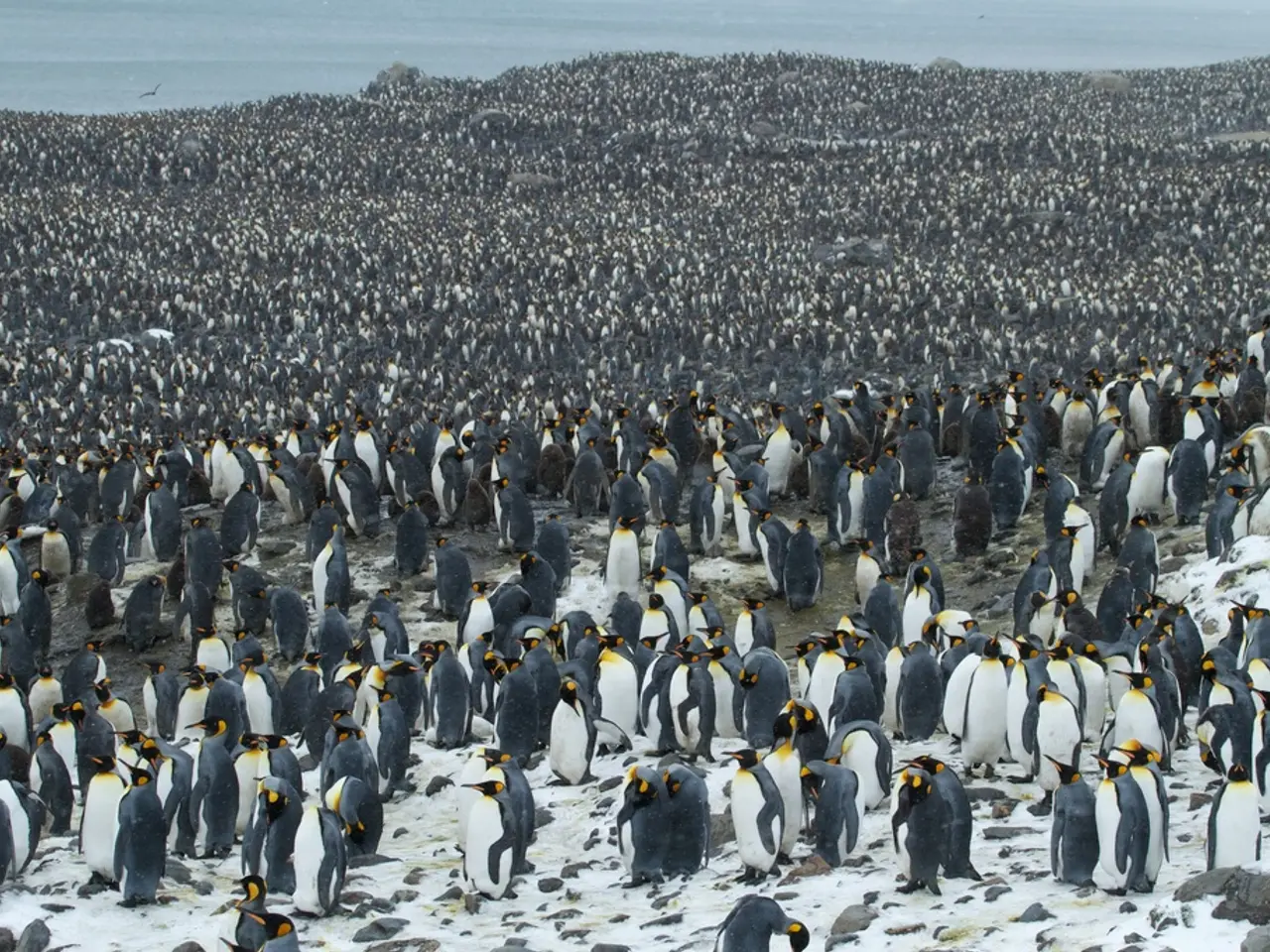Rapid Arctic Warming Unveiled in New Research, Four Times Quicker than Global Temperature Increase
The world witnessed a series of unprecedented climate events in July 2022, with the United Kingdom experiencing its first-ever high temperatures of 40C, and the World Meteorological Organization (WMO) declaring July as one of the three hottest Julys ever recorded.
According to a recent study published in the journal Communications Earth & Environment, the underlying reason for this planetary heating up is human-induced global warming. The study, led by researchers from Norway and Finland, including Antti Lipponen from the Finnish Meteorological Institute, suggests that current climate models may underestimate Arctic heating rates.
The Arctic has been warming nearly four times faster than the rest of the planet over the last 43 years, a phenomenon known as Arctic polar amplification (AA). This rapid warming is accelerating due to the reduction of the white surface cover that reflects the sun's rays back into space, as the Arctic sea ice extent in July 2022 was 4% below average.
The Barents region, the fastest warming area on the planet, has seen its annual average temperature climb by as much as 2.7C (4.9F) each decade in the past two to four decades. This rapid warming has significant implications for the future of the Arctic and its ecosystems, making the region increasingly vulnerable to human-induced global warming.
The study's authors, including Mika Rantanen of the Finnish Meteorological Institute, explain that the highest temperature trends are in areas where sea ice has declined most. The Antarctic sea ice extent reached its lowest value for July in the 44-year satellite data record, at an average of 15.3 million km2, 7% below the 1991-2020 average for that month. The Antarctic sea ice is shrinking due to rising temperatures in the Bellinghausen, Amundell, and Weddell seas.
The research adds to the growing body of evidence that the Arctic is experiencing rapid and unprecedented changes due to climate change. Arctic warming could change weather patterns and affect the migration of marine species in North America and Europe. Dr. Jennifer Francis, Acting Deputy Director and Senior Scientist at the US Woodwell Climate Research Center, stated that larger meanders connected with rapid Arctic warming and melting mean that weather conditions in North America and elsewhere around the Northern Hemisphere tend to linger longer, creating more prolonged heat waves, droughts, stormy periods, and cold spells.
However, the study did not provide specific details on the potential consequences of the faster-than-expected Arctic warming. The study contradicts the most recent landmark Intergovernmental Panel on Climate Change (IPCC) which estimated that the polar region was warming 'only' around twice as fast.
As the world grapples with the effects of climate change, it is crucial to continue monitoring and understanding the rapid changes taking place in the Arctic. The findings of this study underscore the importance of accurate climate models and the need for urgent action to mitigate the impacts of human-induced global warming.
Read also:
- Peptide YY (PYY): Exploring its Role in Appetite Suppression, Intestinal Health, and Cognitive Links
- Toddler Health: Rotavirus Signs, Origins, and Potential Complications
- Digestive issues and heart discomfort: Root causes and associated health conditions
- House Infernos: Deadly Hazards Surpassing the Flames








